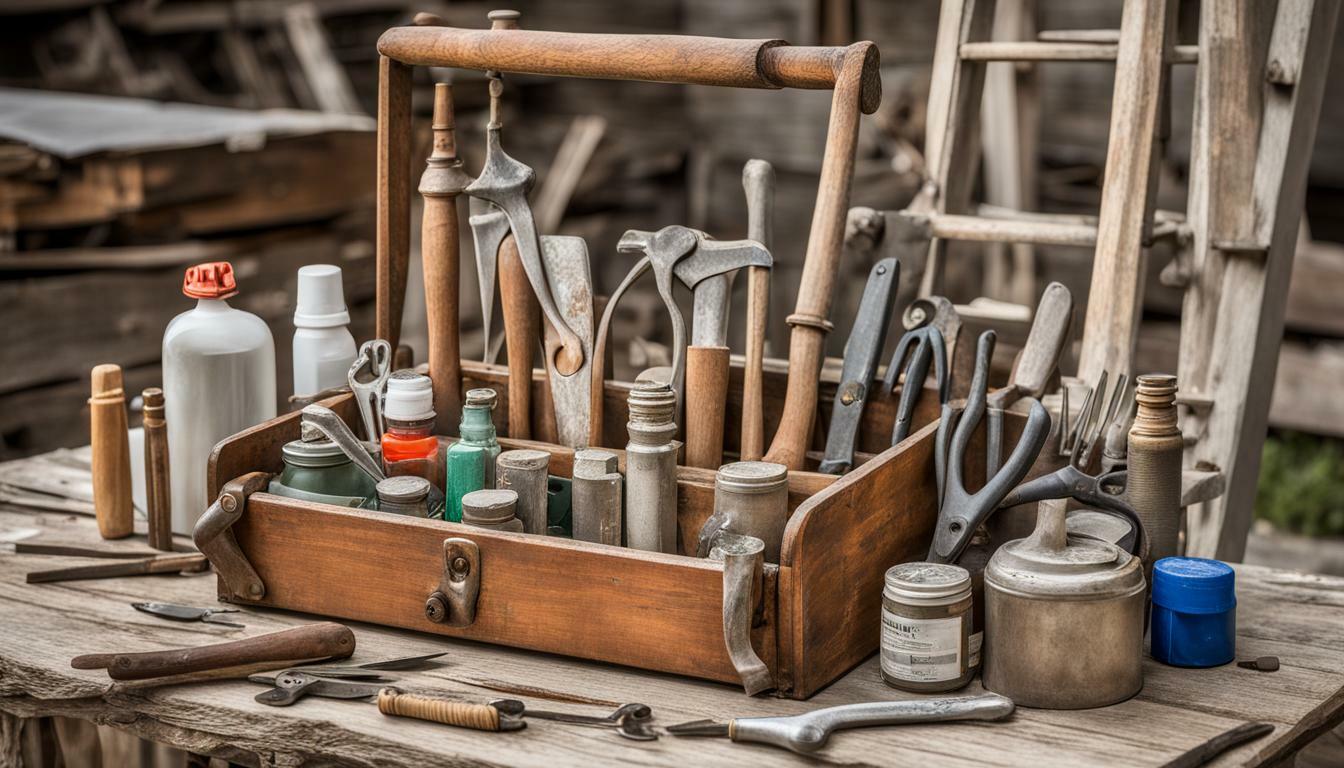Historical home restoration projects can be exciting and rewarding, but they also come with specific safety risks that cannot be ignored. As a historical home restorer, it is crucial to prioritize safety and have a first aid kit readily available in case of accidents or injuries.
DIY safety is especially important in preserving historical homes because any damage caused during a restoration project can be irreversible. To avoid costly mistakes and potential injuries, historical home restorers must have the necessary safety measures in place.
Key Takeaways:
- Historical home restorers must prioritize safety during DIY projects
- Having a first aid kit readily available is essential in case of accidents or injuries
- DIY safety is crucial in preserving historical homes
Understanding the Safety Risks for Historical Home Restorers
Historical home restoration projects can be challenging and rewarding, but they also pose certain safety risks. To ensure a safe working environment, it is important to be aware of the potential hazards that may arise during the restoration process.
Here are some safety tips to keep in mind:
| Tip | Description |
|---|---|
| Use protective gear | Wear protective gear such as gloves, safety glasses, and respirators when necessary to prevent injuries and respiratory problems due to dust and other hazardous materials. |
| Secure the workspace | Ensure that the workspace is clean, organized, and free of clutter to avoid tripping hazards. Secure and lock all power tools and sharp equipment when not in use. |
| Handle materials carefully | Be cautious when handling heavy and sharp materials such as bricks, stones, and glass. Use appropriate lifting techniques and consider using equipment such as dollies and hand trucks to move heavy items safely. |
| Be cautious of electrical hazards | Historical homes may have outdated wiring or electrical systems. Ensure that all electrical equipment and wiring are up to code and avoid working near exposed electrical wires or outlets. |
It is also important to have essential restorers supplies on hand to ensure the safety of the restorers and anyone working on the project. These supplies include:
- Fire extinguishers
- First aid kits
- Emergency lighting and exit signs
- Protective gear such as gloves, safety glasses, and respirators
- Earplugs or earmuffs for hearing protection
- Fall protection equipment such as harnesses and ropes
By following these safety tips and having the necessary restorers supplies, you can maintain a safe and secure working environment for all involved in the historical home restoration project.

First Aid Essentials for Historical Home Restorers
Historical home restoration projects can be exciting, but safety should always be a top priority. Accidents and injuries can happen during the restoration process, which is why it is crucial to have a DIY first aid kit on hand. Here are some essential first aid items that historical home restorers should include in their kits:
| First Aid Item | Purpose |
|---|---|
| Antiseptic Wipes | To clean wounds and prevent infection. |
| Adhesive Bandages | To cover and protect minor cuts and scrapes. |
| Gauze Pads and Roll | To stop bleeding and protect wounds. |
| Medical Tape | To secure gauze and bandages in place. |
| Tweezers | To remove splinters or debris from skin. |
| Scissors | To cut bandages and tape. |
| Instant Cold Pack | To reduce swelling and relieve pain. |
| Disposable Gloves | To protect against blood-borne pathogens. |
Of course, the specific first aid items needed may vary depending on the project and the restorer. It is important to assess the potential risks and injuries that may occur and tailor the DIY first aid kit accordingly.
Remember, a DIY first aid kit is only effective if you know how to use it. Restorers should take the time to learn basic first aid skills and techniques, such as how to stop bleeding and how to perform CPR.
Having a DIY first aid kit on hand can give historical home restorers peace of mind and ensure that they are prepared for unforeseen accidents and injuries.
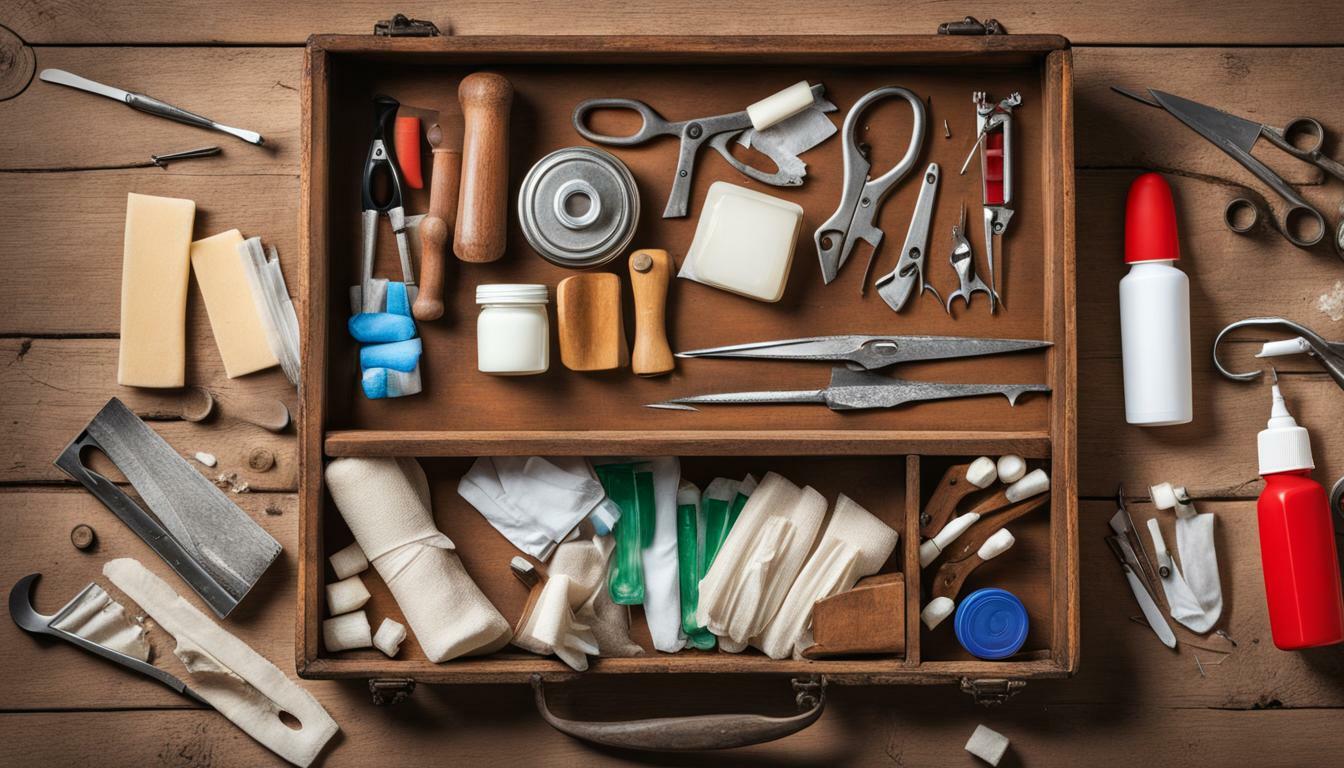
Building Your DIY First Aid Kit: A Step-by-Step Guide
Building a first aid kit for historical home restoration projects is crucial for maintaining DIY safety. Having the appropriate first aid essentials on hand can help mitigate injuries and accidents that may occur during the restoration process. Follow this step-by-step guide to build your own DIY first aid kit and include historical home safety equipment for added protection.
Step 1: Choose the Right Container
Start by selecting a sturdy container that can hold all of your first aid essentials. It should be big enough to fit everything comfortably but small enough to carry around easily. A waterproof container is ideal to protect the contents from moisture damage.
Step 2: Make a First Aid Checklist
Make a list of all the first aid essentials you will need for your kit. The list should include basic first aid items such as bandages, gauze, adhesive tape, and antiseptic wipes. It should also include items specific to historical home restoration, such as a mask to protect against lead paint dust or a respirator for asbestos removal.
Here are some examples of essential items to include in your kit:
- Adhesive bandages (assorted sizes)
- Gauze pads and rolls
- Adhesive tape
- Antiseptic wipes
- Tweezers and scissors
- Instant cold packs
- Gloves
- Masks and respirators
- Eye protection
Make sure to add any additional items that may be necessary based on your specific restoration project.
Step 3: Purchase First Aid Essentials and Historical Home Safety Equipment
Visit your local pharmacy or medical supply store to purchase the items on your first aid checklist. Don’t forget to include historical home safety equipment such as masks, safety glasses, and gloves to protect against hazardous materials.
Step 4: Organize and Label Your DIY First Aid Kit
Once you have all your items, organize them in your container and label it clearly. It’s essential to know where each item is located in case of an emergency. Keep your first aid kit in a cool, dry place that is easily accessible.
By following this step-by-step guide and including historical home safety equipment in your DIY first aid kit, you can ensure that you are well-prepared for any accidents or injuries during your historical home restoration project.
Important Safety Measures During Historical Home Restoration
When it comes to historical home restoration, safety should always be a top priority. In addition to having a well-stocked first aid kit, there are several important safety measures that historical home restorers should take to minimize the risk of accidents and injuries. Here are some essential safety tips to keep in mind:
- Wear appropriate safety gear: Always wear the appropriate safety gear for the task at hand. This may include gloves, goggles, respirators, hard hats, and steel-toed boots.
- Follow proper tool safety procedures: Be sure to read the instructions and safety guidelines for all tools being used. Keep them properly maintained and use them correctly.
- Keep the workspace clean and organized: A cluttered workspace can increase the risk of accidents and injuries. Keep the area clean and organized, with tools properly stored and easily accessible.
- Handle materials properly: Use caution when handling hazardous materials, such as lead paint or asbestos. Follow proper safety procedures for handling, removing, and disposing of these materials.
- Stay hydrated and take breaks: Restoration work can be physically demanding. Stay hydrated and take regular breaks to avoid exhaustion and injury.
- Know when to call for professional help: While DIY safety is important, there are certain situations where it may be necessary to seek professional help. Recognize your limitations and know when to call for assistance.
By following these safety tips, historical home restorers can ensure a safe and healthy work environment throughout their restoration project.
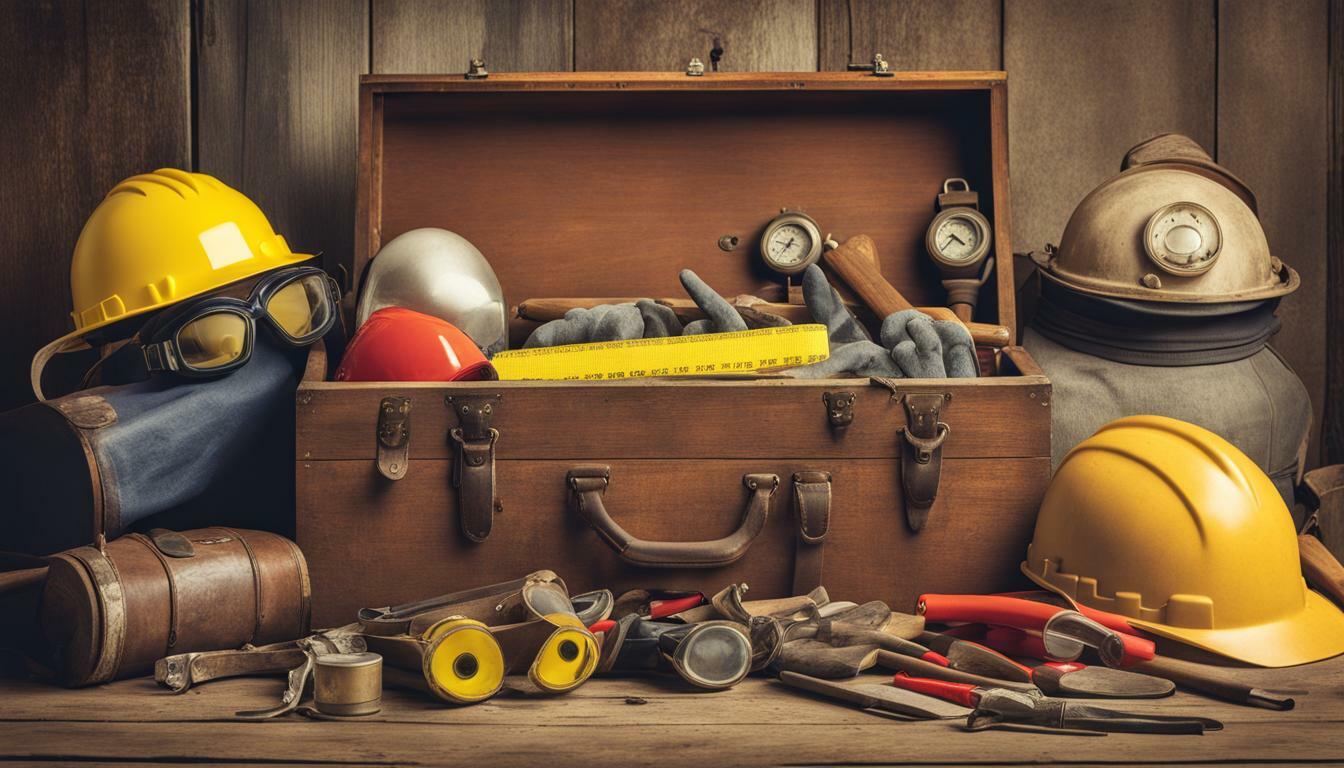
Dealing with Common Injuries in Historical Home Restoration
Accidents can happen during historical home restoration, so it’s important to be prepared with the right first aid essentials and restorers supplies. Here are some common injuries and how to deal with them:
| Injury | First Aid Essential | Restorers Supply |
|---|---|---|
| Cuts and Scrapes | Antiseptic wipes and bandages | Protective gloves and eye wear |
| Bruises and Sprains | Ice packs and pain relievers | Protective padding and sturdy footwear |
| Burns | Cool water and aloe vera gel | Fire extinguisher and flame-retardant clothing |
It’s also important to take preventative measures to avoid these injuries. Wear protective equipment, such as gloves, eye wear, and sturdy footwear, when handling tools or working with materials. Use caution when climbing ladders or working at heights. Keep the work area well-lit and organized to avoid tripping hazards. If you experience any serious injuries or medical emergencies, seek professional help immediately.
Remember, having the right first aid essentials and restorers supplies can make a big difference in dealing with injuries and emergencies during historical home restoration.

Emergency Situations: When to Seek Professional Help
In some situations, seeking professional medical help is necessary, no matter how prepared or cautious you may be. If an accident or injury occurs that exceeds the limitations of your DIY safety knowledge or tools, it is essential to seek professional help as soon as possible. Attempting to handle severe injuries or emergencies without proper training or equipment can be dangerous and potentially life-threatening.
Restorers supplies can help mitigate emergencies before professional assistance arrives. However, it is crucial to know when to call for help. If someone experiences severe bleeding, unconsciousness, severe burns, or other critical conditions, call for emergency services immediately. Do not hesitate to seek professional medical help if the situation calls for it.
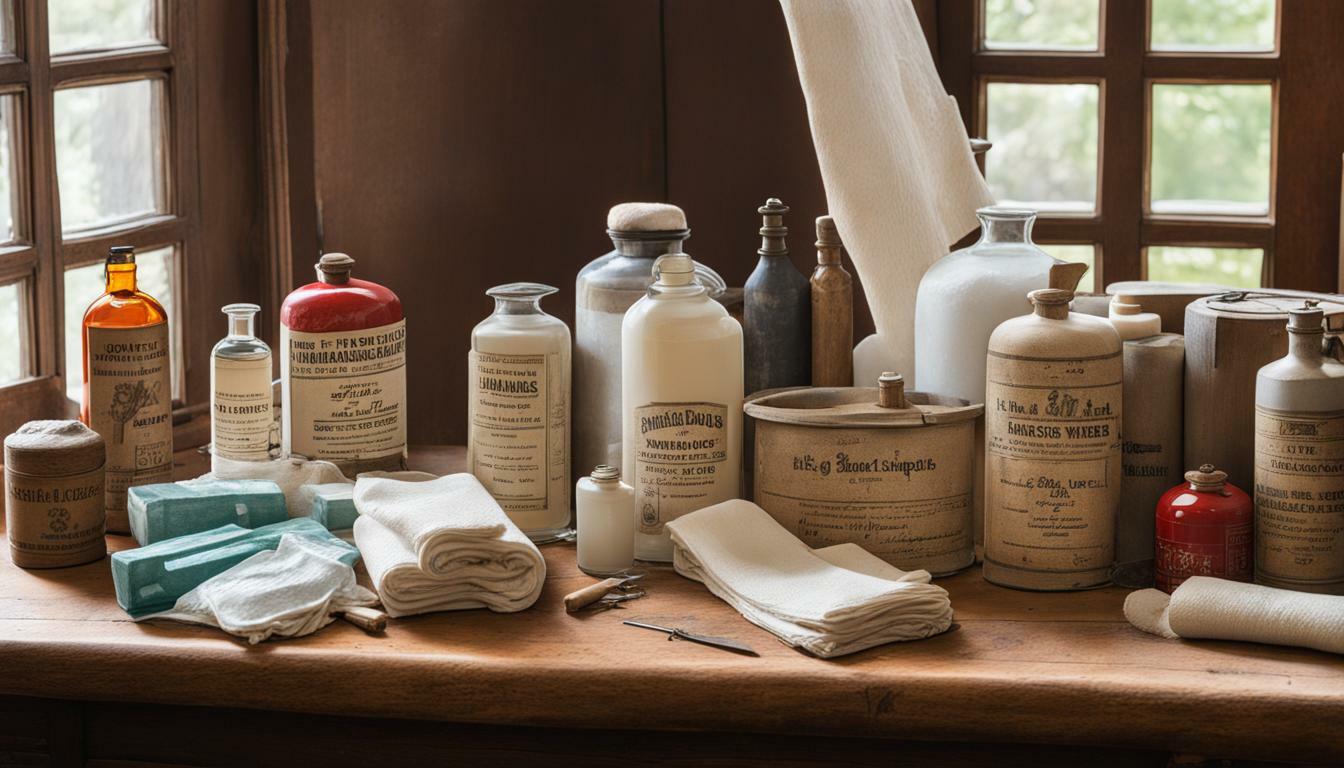
While DIY safety is essential and can prevent many accidents and injuries, it is crucial to acknowledge the limits of our knowledge and expertise. Whenever you feel unsure or unsafe about a situation, it is better to err on the side of caution and seek professional assistance. Remember, your life and health are more important than any restoration project.
Essential Safety Skills for Historical Home Restorers
Historical home restoration projects can be exciting and rewarding, but they also involve specific safety risks. To minimize these risks and ensure a safe working environment, it is essential for historical home restorers to possess certain safety skills. Here are some practical tips for acquiring and improving these skills:
- Attend training sessions: Many organizations offer training sessions and workshops for DIY safety. These sessions can be helpful for learning about the specific risks involved in historical home restoration and the appropriate safety measures to take.
- Research the appropriate safety equipment: Make sure to research and invest in the appropriate safety equipment for the specific restoration project. This can include items such as goggles, gloves, and hard hats.
- Keep your workspace organized: Maintaining a clean and organized workspace can help minimize the risk of accidents and injuries. Make sure to keep your tools and materials properly stored and easily accessible.
- Check and maintain your tools regularly: Before each use, make sure to check your tools for any damage or defects. If any issues are found, repair or replace the tool immediately. Proper maintenance can help extend the lifespan of your tools and ensure safe usage.
- Communicate with others: If you are working with a team or partner, make sure to communicate any safety concerns or risks. It is important for everyone involved to be on the same page regarding safety measures.
By possessing these essential safety skills and implementing the appropriate safety measures, historical home restorers can ensure a safe and enjoyable restoration process. Remember, DIY safety is a crucial aspect of preserving and protecting historical homes for future generations.

Maintaining a Safe and Healthy Work Environment
Ensuring a safe and healthy work environment is crucial for historical home restorers. By implementing safety tips and practices for home restoration safety, restorers can minimize accidents and injuries while working on their projects. Here are some practical tips for maintaining a safe and healthy work environment during historical home restoration:
- Organize your workspace: Keep your workspace clean and clutter-free to minimize tripping hazards. Group tools and materials by type and store them in designated areas to prevent accidents.
- Handle materials safely: Wear appropriate protective gear, such as gloves, masks, and goggles, when handling hazardous materials like lead paint or asbestos. Use tools like hammers and saws with care and attention to avoid accidents.
- Take regular breaks: Restoration projects can be physically and mentally demanding. Take regular breaks to stretch, hydrate, and rest your eyes to prevent fatigue and reduce the risk of injury.
- Ensure proper ventilation: Potentially hazardous materials can release fumes that are dangerous to breathe. Make sure to work in a well-ventilated area or use fans and extraction systems to minimize fume build-up.
- Prioritize your well-being: Finally, do not prioritize work at the expense of your well-being. Restorers should take care of their physical and mental health to ensure they can work safely and avoid accidents.
By implementing these safety tips and practicing home restoration safety, historical home restorers can create a safe and healthy work environment. Remember to prioritize safety and well-being throughout the restoration process to achieve a successful restoration project.
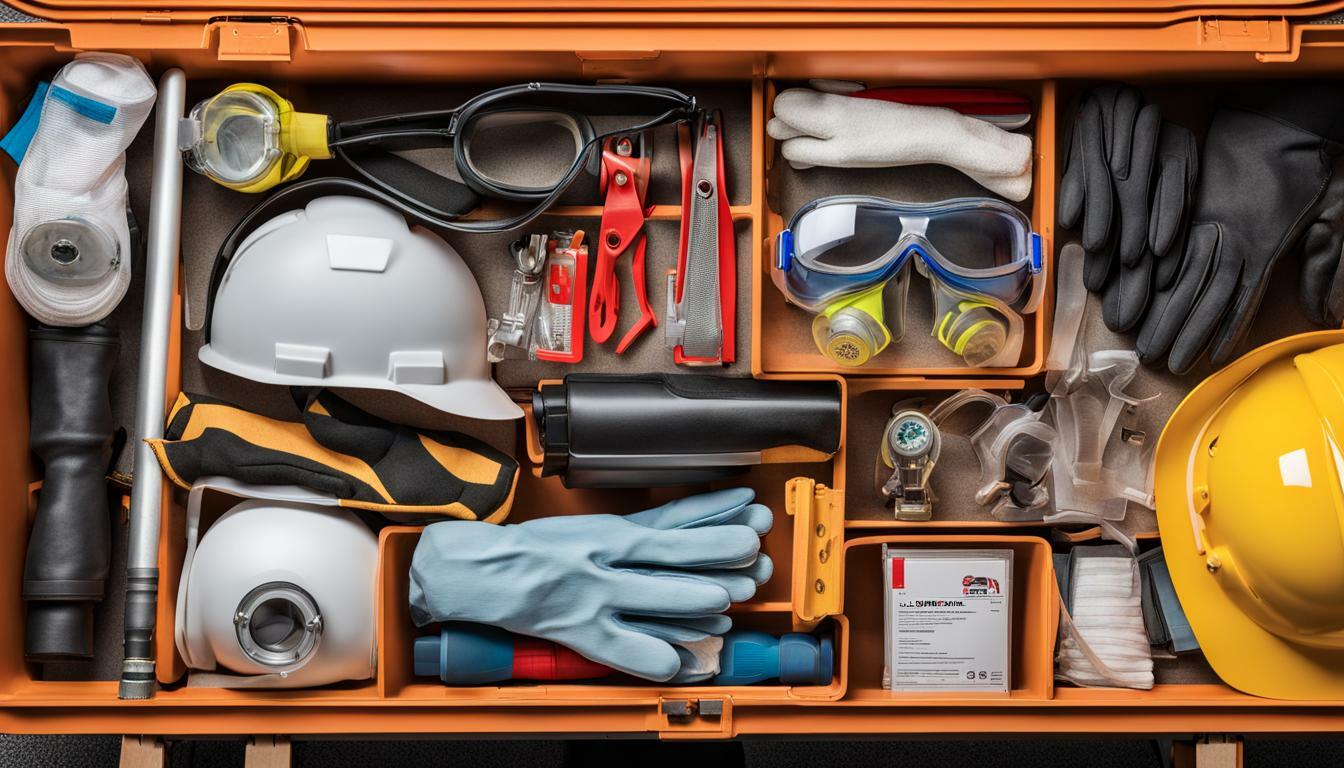
Encouraging Others to Prioritise DIY Safety in Historical Home Restoration
As historical home restorers, it is essential to prioritize DIY safety in all our projects. We must also encourage others to follow suit and create a safety-conscious community within the restoration industry. By sharing our experiences and safety tips, we can help prevent accidents and injuries at work.
One way to encourage DIY safety is by educating others about the potential hazards involved in home restoration projects. We can forward them this article or any other reliable resource that highlights the importance of first aid kits, safety equipment, and overall safety measures. Educating our colleagues and peers can empower them to become safety-conscious and minimize the risks involved in DIY restoration projects.
Another way to promote DIY safety is by leading by example. By prioritizing safety in our own work, we create a culture of safety that others can follow. We can also encourage others to share their safety tips and ideas, creating an open forum for promoting safety in the industry.
Finally, we can advocate for DIY safety by supporting organizations that aim to promote safe practices in the restoration industry. For example, the National Trust for Historic Preservation offers various resources and guidelines for preserving historical homes while maintaining a safe work environment. By supporting such organizations, we can contribute to a safer restoration industry for all.
As we wrap up this article, let us remember that DIY safety is crucial for any historical home restorer. By encouraging others to prioritize safety and implementing our own safety measures, we can create a safer and healthier work environment for ourselves and our peers. Let us all work together towards a more safety-conscious restoration industry.
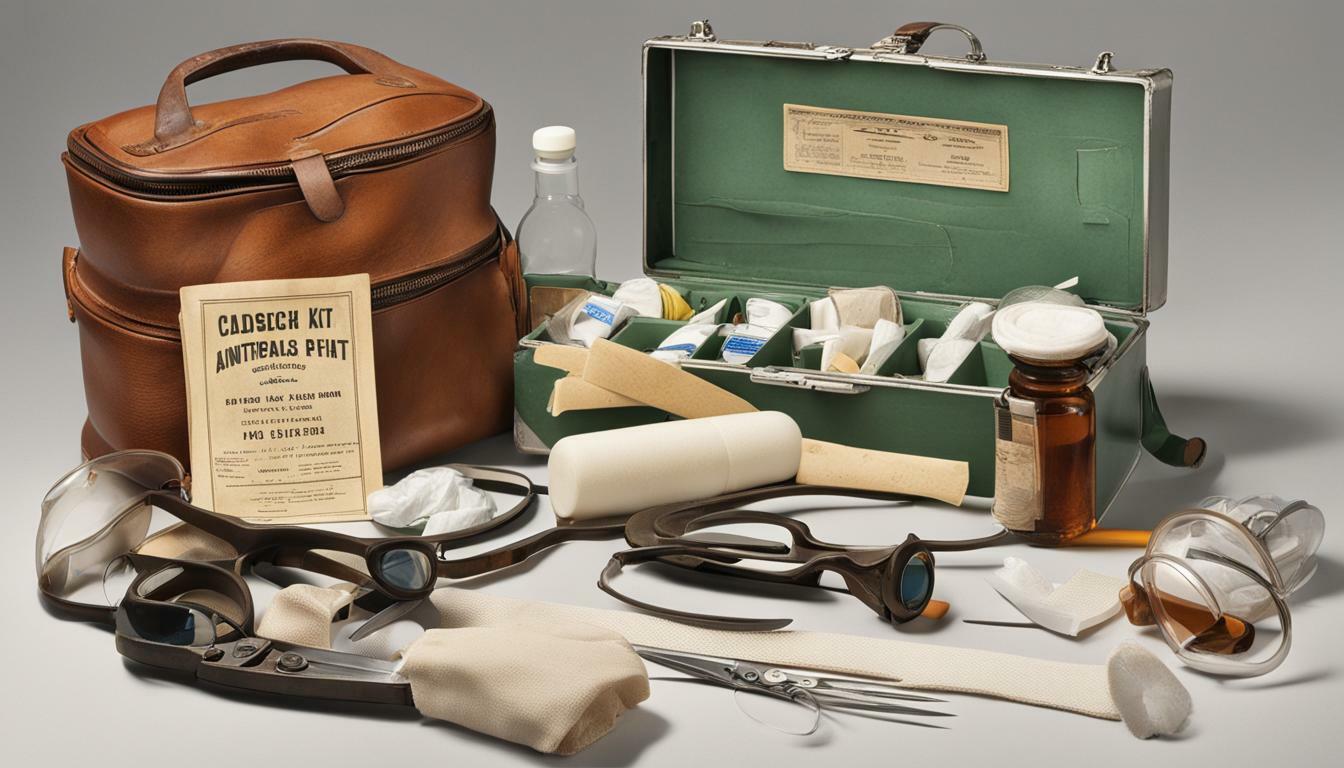
Conclusion
In conclusion, historical home restoration projects can be exciting and rewarding. However, ensuring DIY safety is essential to avoid accidents and injuries. It is crucial to have a first aid kit specifically tailored for historical home restorers that contains the necessary first aid essentials and safety equipment. Understanding the safety risks involved in home restoration projects and implementing appropriate safety measures can significantly reduce the risk of injuries and emergencies.
Maintaining a safe and healthy work environment through good organization, handling of materials, and ensuring overall well-being is crucial in avoiding injuries. Possessing essential safety skills and prioritizing proper training and knowledge in DIY safety is key to a successful restoration project. In addition, encouraging others to prioritize DIY safety and promoting safety-conscious communities among fellow restorers can create a safer and healthier environment for everyone.
By prioritizing DIY safety, restorers can enjoy the process of preserving historical homes and the long-term benefits that come with it. Remember, safety first, always!
